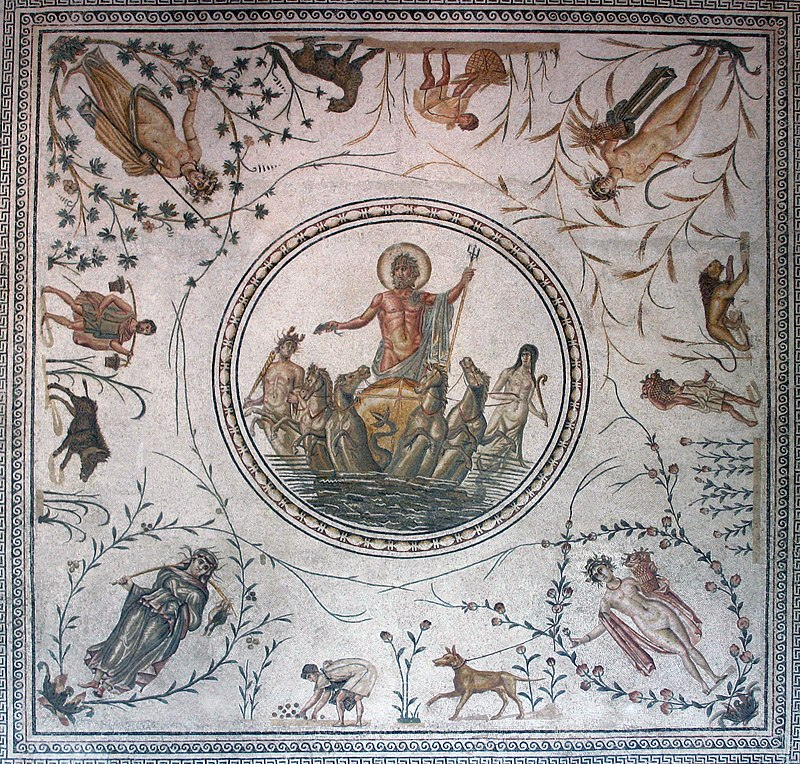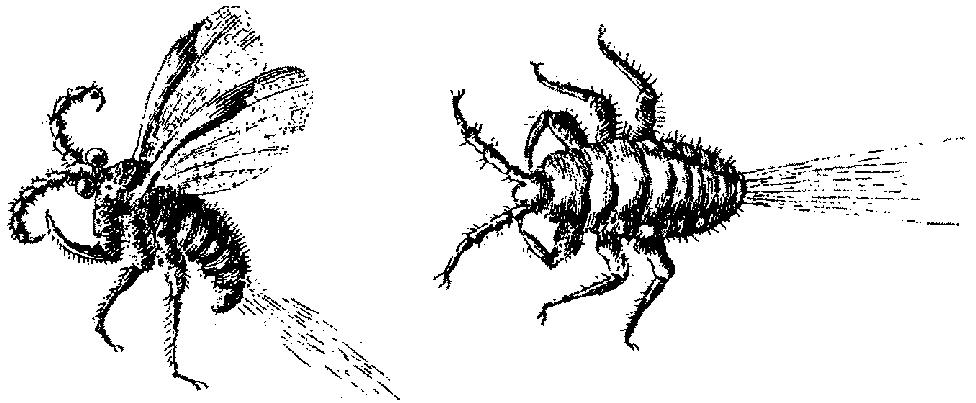Tag: Cows
-

Baccharis is a genus of perennials and shrubs in the aster family (Asteraceae)
They are commonly known as baccharises but sometimes referred to as “brooms”, because many members have small thin leaves resembling the true brooms. They are not at all related to these however, but belong to an entirely different lineage of eudicots. B. halimifolia is commonly known as “groundsel bush”, however true groundsels are found in the genus Senecio. Baccharis, with over 500…
-

Saints Florus and Laurus, twin brothers who worked as stonemasons
Saints Florus and Laurus are venerated as Christian martyrs of the 2nd century. According to a Greek tale, they were twin brothers who worked as stonemasons. They were originally from Constantinople, Byzantium but settled in Ulpiana, Dardania, south of Pristina, Kosovo in the district of Illyricum. They were educated in the art of masonry by two men named Maximus and Proculus, who were Christians. According to their legend, Likaion, the prefect of Illyricum, employed the brothers in the construction…
-

Bezoar
A bezoar is a mass often found trapped in the gastrointestinal system, though it can occur in other locations. A pseudobezoar is an indigestible object introduced intentionally into the digestive system. There are several varieties of bezoar, some of which have inorganic constituents and others organic. The term has both modern (medical, scientific) and traditional usage. Types By content Food boluses (or boli; singular bolus) have the…
-

A selection of apothecary jars.
Description A selection of apothecary jars. Four glass cylindrical drug jars with a parchment cover, labelled “Vitriol Alb.” (zinc sulphate), “OCUL CANCR” (Crab’s eyes – stones found in stomach of cray-fish as animal is about to change in its shell),”Sang Draco.V.” (Dragon’s blood), and “VITRIOL. COERUL.” (copper sulphate). Probably Spanish, 17th or 18th century. Wellcome…
-

Bārûtu, the “art of the diviner”
The Bārûtu, the “art of the diviner,” is a monumental ancient Mesopotamian compendium of the science of extispicy or sacrificial omens stretching over around a hundred cuneiform tablets which was assembled in the Neo-Assyrian/Babylonian period based upon earlier recensions. At the Assyrian court, the term extended to encompass sacrificial prayers and rituals, commentaries and organ models. The ikribu was the name of collections of incantations to accompany the extispicy.…
-

Neptune
Neptune (Neptūnus) is the god of freshwater and the sea in Roman religion. He is the counterpart of the Greek god Poseidon. In the Greek tradition, he is a brother of Jupiter and Pluto; the brothers preside over the realms of heaven, the earthly world (including the underworld), and the seas. Salacia is his wife. Depictions of Neptune in Roman mosaics, especially those in North Africa, were influenced by Hellenistic conventions. He was likely associated…
-

Eagle stones
For the mushroom, see Mycena aetites. In the magico-medical tradition of Europe and the Near East, the aetites (singular in Latin) or aetite (anglicized) is a stone used to promote childbirth. It is also called an eagle-stone, aquiline, or aquilaeus. The stone is said to prevent spontaneous abortion and premature delivery, while shortening labor and parturition for a full-term birth. The eagle-stone is defined as “the common name of the aetite” by Thomas Wright, Dictionary of Obsolete…
-

Dicoumarol (Moldy Sweet Clover) Toxicosis in a Group of Holstein Calves
Yamini B, Poppenga RH, Emmett BW, Judge LJ. Dicoumarol (Moldy Sweet Clover) Toxicosis in a Group of Holstein Calves. Journal of Veterinary Diagnostic Investigation. 1995;7(3):420-422. doi:10.1177/104063879500700328 References 1. Alstad AD, Casper HH, Johnson LJ: 1985, Vitamin K treatment of sweet clover poisoning in calves. J Am Vet Med Assoc 187:729–731. 2. Blakley BR: 1985, Moldy sweet clover (dicoumarol) poisoning in…
-

Polish Cochineal (Porphyrophora polonica)
Polish cochineal (Porphyrophora polonica), also known as Polish carmine scales, is a scale insect formerly used to produce a crimson dye of the same name, colloquially known as “Saint John’s blood”. The larvae of P. polonica are sessile parasites living on the roots of various herbs—especially those of the perennial knawel—growing on the sandy soils of Central Europe and other parts of Eurasia. Before the development of aniline, alizarin, and other synthetic dyes, the insect was…
-
Uridine monophosphate synthase
The enzyme Uridine monophosphate synthase (EC4.1.1.23, UMPS) (orotate phosphoribosyl transferase and orotidine-5′-decarboxylase) catalyses the formation of uridine monophosphate (UMP), an energy-carrying molecule in many important biosynthetic pathways.[5] In humans, the gene that codes for this enzyme is located on the long arm of chromosome 3 (3q13).[6] Structure and function This bifunctional enzyme has two main domains, an orotate phosphoribosyltransferase (OPRTase, EC 2.4.2.10) subunit and an orotidine-5’-phosphate decarboxylase (ODCase, EC 4.1.1.23) subunit.[7] These…
-
Pompe Disease
Glycogen storage disease type II, also called Pompe disease, is an autosomal recessive metabolic disorder[1] which damages muscle and nerve cells throughout the body. It is caused by an accumulation of glycogen in the lysosome due to deficiency of the lysosomal acid alpha-glucosidase enzyme. It is the only glycogen storage disease with a defect in lysosomal metabolism, and the first glycogen storage disease to be identified, in…
-

Lysine Tyrosylquinone (LTQ)
LTQ does not have a wikipedia page so I will check elsewhere. In the meantime, I found another reason to just say no to beans – osteolathyrism aka odoratism, which is a form of the disease Lathyrism. Wikipedia says: The disease results from the ingestion of Lathyrus odoratus seeds (sweet peas) from the family Fabaceae (legumes). The toxin found in the sweet peas is…
-

Desmosine
Desmosine is an amino acid found uniquely in elastin, a protein found in connective tissue such as skin, lungs, and elastic arteries. Desmosine is a component of elastin and cross links with its isomer, isodesmosine, giving elasticity to the tissue. Detection of desmosine in urine, plasma or sputum samples can be a marker for elastin breakdown due to high elastase activity related to certain diseases.…
-
Oxytocin
Oxytocin (Oxt or OT) is a peptide hormone and neuropeptide normally produced in the hypothalamus and released by the posterior pituitary. Gray’s Anatomy: The Anatomical Basis of Clinical Practice (41 ed.). Elsevier Health Sciences. 2015. p. 358. ISBN 978-0-7020-6851-5. It plays a role in social bonding, reproduction, childbirth, and the period after childbirth. Audunsdottir K, Quintana DS (2022-01-25). “Oxytocin’s dynamic role across the lifespan”. Aging Brain: 100028. doi:10.1016/j.nbas.2021.100028. ISSN 2589-9589. S2CID 246314607. Leng G, Leng RI (November 2021). “Oxytocin: A…
-

Prolactin (PRL)
In mammals, prolactin is associated with milk production; in fish it is thought to be related to the control of water and salt balance. Prolactin also acts in a cytokine-like manner and as an important regulator of the immune system. It has important cell cycle-related functions as a growth-, differentiating- and anti-apoptotic factor. As a growth factor,…
-
Rennet
For the apple varieties, see Reinette Rennet is a complex set of enzymes produced in the stomachs of ruminant mammals. Chymosin, its key component, is a protease enzyme that curdles the casein in milk. In addition to chymosin, rennet contains other enzymes, such as pepsin and a lipase. Rennet has traditionally been used to separate milk into solid curds and liquid whey, used in the production of cheeses. Rennet from calves has become less common for this use, to the…
Recent Posts
- 🧬 Disease Table with Low Sodium Connection
- 🧂 Sodium Reduction and Sodium Replacement: A History of Reformulation and Exploding Diseases, Including Many Diseases Unheard of Before Deadly Sodium Policies
- 🧂 The DEADLY 1500 mg Sodium Recommendation predates the WHO’s formal global sodium reduction push by nearly a decade (and it’s even worse than that)
- 🧬 What Is Beta-Glucuronidase?
- When Sugar Was Salt: Crystalline Confusion and the Covenant of Sweetness
Tags
ADAM ASPARTAME Birds Blood Bones Brain Bugs Cancer Columba Cows crystallography Death Death cults Eggs Etymology Gastrin Gold Growth hormone History Hormones Insulin Liver Mere Perplexity Metal Monkey Business Mythology Paracetamol Plants Poison Pregnancy Protein Religion Reproduction Rocks Salt Slavery Snakes Sodium the birds and the bees Thiocyanate Tobacco Tylenol Underworld Venom zinc
